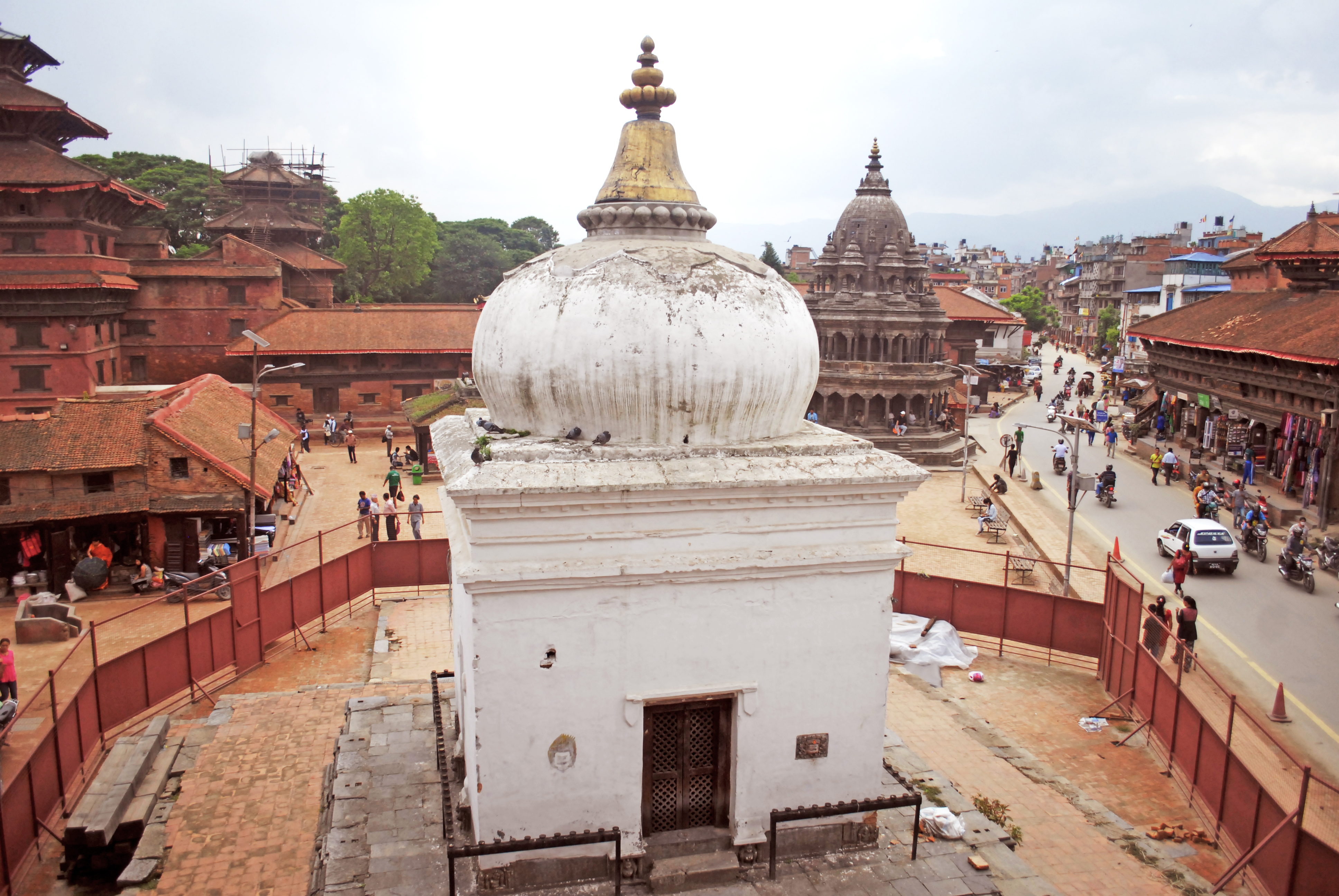Bhaidegah being restored to its original style
Patan Durbar Square’s Bhaidegah was destroyed in 1934 quake and never restored to its original pagoda style. The April 25 temblor put a stop to its restoration work that had begun; work to resume in a few weeks
KATHMANDU: As you enter the Patan Durbar Square, you can notice a stucco dome with a large bronze finial in the southwest corner. But this structure is hardly noticeable. If you notice it is different in structure and look. It doesn’t match the rest of the Malla-era pagoda and shikhara style architecture in this Square. However, 81 years ago, this structure looked like any other pagoda temple. Made of wood, mud, and indigenous roof tiles, it was a three-storied pagoda architecture.
The great earthquake of 1934 (1990 BS) brought down the temple leaving only the plinth and foundation intact. Unlike the other monuments of Patan Durbar Square, this Bhaidegah was built by a commoner and was never restored after the quake. When other monuments affected by that quake were restored or reconstructed, a Moghul-style dome was built on the temple plinth to protect the Shiva lingam. Having stood more than 81 years in this dome style, it is however likely to be restored to its original style in the next few years.
Degah of Shiva
Dedicated to Lord Shiva, the temple is a Vishveshvara temple. It was built in the 17th Century by Patan kingdom’s chautaria (prime minister) Bharo Bhagirath Bhaiya in 1678. As per cultural expert Satya Mohan Joshi, the temple was built after the Kashi Vishwanath Temple.
Nepali people then used to go to Benaras, India to live there or for pilgrimage to perform shraddha. And Benaras’ Vishwanath Temple was very popular. Since, it was destroyed on the orders of Mughal emperor Aurangzeb, Bhaiya built one in Nepal for Nepali people here as “then there was no meaning for Nepali people to go to Kasi (Benaras)”.
And so Bhaidegah got its name from the man behind the temple combined with ‘degah’ or ‘degal’ which is ‘temple’ in Newari.
Forbidden country
Joshi was 13/14 years old when 1934 Nepal–Bihar earthquake of 8.4 magnitude on the Richter scale struck Nepal. He recalls monuments destroyed then being restored slowly. The government had created a fund — Bhukampa Pidit Kosh — to help people rebuild their life after collecting statistics, as grant. As for sampada (heritage) which was mainly in the Valley, “the monuments were slowly reconstructed or restored one after another. Some of the structures also took time — a few years like Dharahara and Ghantaghar”.
Without the concept of humanitarian aid, reconstruction or restoration of such monuments was done by the government by using their treasury or money collected in fund. Meanwhile, Bhaidegah was not restored to its original style because “it was tough to do it as there was fund problems. So, it was was rebuilt in a simpler form”.
During the large scale destruction, “it can be impossible to restore each and every monument due to lack of skilled manpower along with financial crunches. Moreover, house and shelter is priority in such cases. Monuments won’t be made instead of houses”.
In eight-10 years priority shifts as new problems come into the picture. “Will people look into their new problems or go back rebuilding a temple destroyed 10 years ago?” he asks. “Not all monuments destroyed by the 1934 earthquake were rebuilt and there are several reasons. Where is the guarantee that we ‘will’ restore all the monuments destroyed in the April 25 quake even if we say we will restore them? We never know about tomorrow.”
Financial issues, lack of skilled manpower and availability of materials needed could obstruct the restoration process. He has experienced this with the Bhaidegah project in terms of materials and skilled manpower. Wood size of 10 inches by 10 inches up to 20 feet of length that they need was difficult to find in the market. They got it from Bhaktapur with much difficulty.
The earthquake of April 25 had stopped the restoration work of Bhaidegah. It will resume in the next few weeks. The temporary structure will be demolished and original architecture will take shape.






